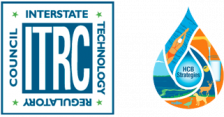Monitoring methods for cyanobacteria and cyanotoxins discussed in this guidance are shown below. Check/uncheck the box for monitoring requirements to see which method may suit your needs. Each method has a link that will take you directly to that section of our guidance document for a discussion of how the method works and resources to learn more about it. Definitions of the criteria used here are located in Section 4.1 or visible when touched by your cursor. For additional information on management and control strategies, visit Section 6. See Section 3.3.4 of HCB-2 for additional considerations with analysis of benthic cyanobacteria samples.
| Select your monitoring requirements: | |||||
| Target Analyte | Lab Required | Turnaround Time | |||
| Planktonic Cyanobacteria | Yes | Less than 24 hours | |||
| Benthic Cyanobacteria | No | 1 to 3 days | |||
| Cyanotoxin | |||||
| Result Type | Sample Type | |||||||||
| P/A | ID | DEN/AB | P/A | CGN | TOT | |||||
| Visual Assessments - planktonic | 4 | 1 | 1 | 1 | 1 | 1 | Qualitative | Variable | $ | Novice |
| Visual Assessments - benthic | 4 | 1 | 2 | 1 | 1 | 1 | Qualitative | Variable | $-$$ | Novice to Expert |
| Jar and Stick Tests - planktonic | 4 | 1 | 1 | 1 | 1 | 1 | Qualitative | Point sampling | $ | Novice |
| Pigments - planktonic | 4 | 1 | 4 | 1 | 1 | 1 | Quantitative | Point sampling | $$ | Intermediate |
| Pigments - benthic | 4 | 1 | 4 | 1 | 1 | 1 | Quant./Qual. | Point sampling | $$ | Intermediate |
| Remote Sensing - planktonic | 4 | 1 | 4 | 1 | 1 | 1 | Quant./Qual. | Indirect | $ | Intermediate / Expert |
| Remote Sensing - benthic | 2 | 1 | 1 | 1 | 1 | 1 | Quant./Qual. | Indirect | $ | Intermediate / Expert |
| Microscopy - planktonic | 4 | 4 | 4 | 1 | 1 | 1 | Quant./Qual. | Point sampling | $$ | Intermediate / Expert |
| Microscopy - benthic | 4 | 2 | 4 | 1 | 1 | 1 | Quant./Qual. | Point sampling | $$ | Intermediate / Expert |
| Genetic Methods for Identification - planktonic | 4 | 4 | 3 | 1 | 1 | 1 | Quantitative | Point sampling | $$ | Intermediate |
| Genetic Methods for Identification - benthic | 4 | 4 | 3 | 1 | 1 | 1 | Quantitative | Point sampling | $$ | Intermediate |
| Semi-automated Classification and Machine Learning - planktonic | 4 | 4 | 4 | 1 | 1 | 1 | Quantitative | Point sampling | $$ | Intermediate |
| Strip Tests / Dip Sticks | 1 | 1 | 1 | 4 | 1 | 4 | Semi-Quant. | Point sampling | $$ | Novice |
| Protein Phosphatase Inhibition Assay (PPIA) | 1 | 1 | 1 | 4 | 1 | 1 | Quantitative | Variable | $$ | Intermediate |
| ELISA | 1 | 1 | 1 | 4 | 1 | 4 | Quantitative | Variable | $$ | Intermediate |
| Mass Spectrometry | 1 | 1 | 1 | 4 | 4 | 1 | Quantitative | Variable | $$$ | Expert |
| Chromatography | 1 | 1 | 1 | 4 | 4 | 1 | Quantitative | Variable | $$$ | Expert |
| Genetic Analysis for Cyanotoxins | 4 | 1 | 1 | 4 | 1 | 1 | Quantitative | Point sampling | $$ | Intermediate |
| Symbols | Abbreviations | ||
| Suitable | P/A | Presence/absence | |
| Potential | ID | Identification | |
| Not suitable | DEN/AB | Density/abundance | |
| CGN | Congener-specific concentrations | ||
| TOT | Total cyanotoxin concentrations | ||


